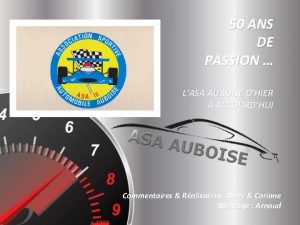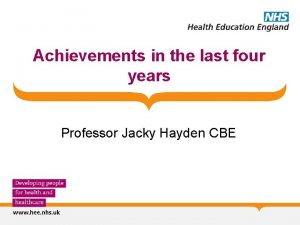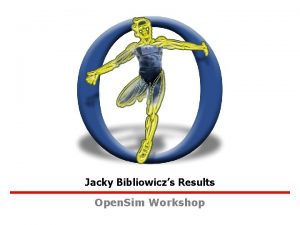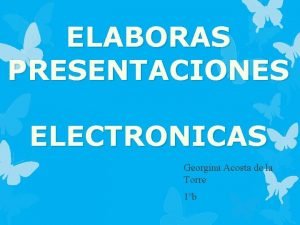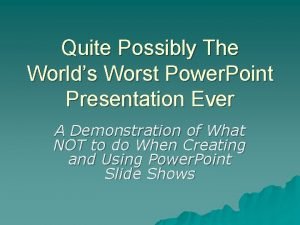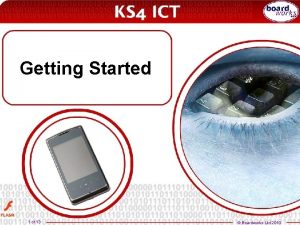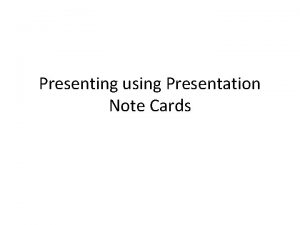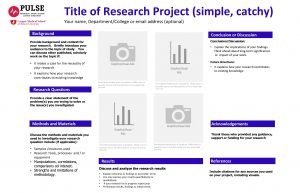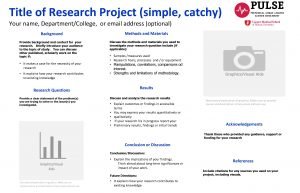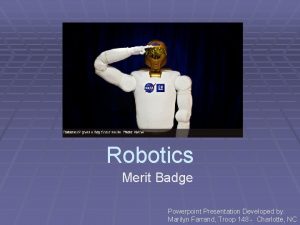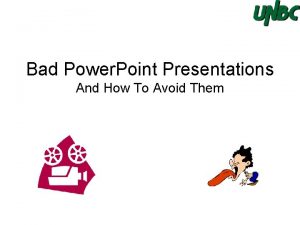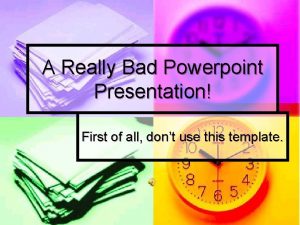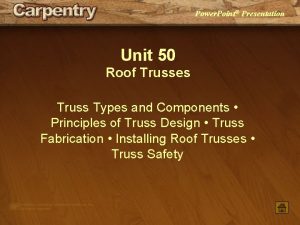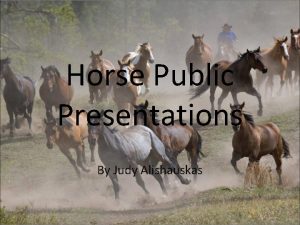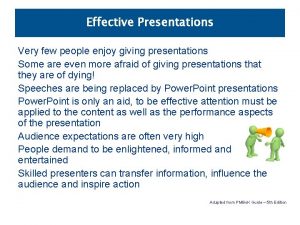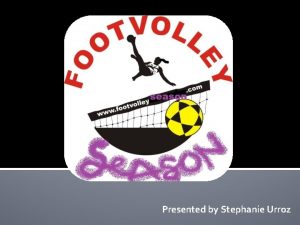1 Giving Research Presentations Jacky Austermann Stephanie Pfirman





















































- Slides: 53

1 Giving Research Presentations Jacky Austermann, Stephanie Pfirman, Martin Stute, and the Environmental Science Senior Seminar Faculty and Students, Barnard College & Columbia University 10/20/2018

Outline of your talk 2 Preparing your slides Giving your talk An example Preparing for the unknown

Preparing your slides

Outline of your talk 4 Title, authors, acknowledgements Introduction (overview/reason for research) Thesis statement (project goals) Methods and approach Preliminary results (analysis/discussion) Broader implications (summary/next steps)

Outline of your talk 5 Title, authors, acknowledgements Introduction (overview/reason for research) Thesis statement (project goals) Methods and approach Preliminary results (analysis/discussion) Broader implications (summary/next steps) Don’t use this exact outline in your presentation (either fill in more information or don’t show it)

Outline of your talk 6 Title, authors, acknowledgements Introduction (overview/reason for research) Thesis statement (project goals) Methods and approach Preliminary results (analysis/discussion) Broader implications (summary/next steps) 10 minute presentation + 2 minutes discussion On average 1 slide per minute

General guidelines 7 Know your audience What do you want the audience to learn? Tailor your presentation to the situation Avoid jargon Basic rule – repetition is good Say 1 -3 main points in the introduction Say what you are going to say it Give the talk Then say what you said Summarize main points in the conclusion

Methods and approach 8 Use photos or diagrams to describe setup Indicate data source if they are not your own Don’t delve into details

Methods and approach Zhong et al. , 2014

Methods and approach Gas chromatography Ion Chromatography

Model and approach 11 Create a summary cartoon, flow chart or concept map with major findings, or an illustration of the processes or problem Consider showing it at the beginning and the end You can use web sources for figures Include reference! https: //www. niehs. nih. gov/about/stewardship/faq/index. cfm

12 Presentation of Data and Results Avoid using tables unless for small amounts of data Use figures instead of tables whenever possible Indicate data source if they are not your own

Esopus Creek Hydrology 13 J. Lawrence Discharge of the Esopus Creek (Coldbrook, NY) and precipitation at Slide Mountain, NY (source: USGS & NCDC)

Esopus Creek Hydrology 14 Discharge of the Esopus Creek (Coldbrook, NY) and precipitation at Slide Mountain, NY (source: USGS/NCDC)

Using figures instead of words 15 Figures (slides) should be readable, understandable, uncluttered Include reference for data and images on figure Include units Keep figures simple, use color logically for clarification Blue = cold, red = warm, dark = little, bright = a lot Invisible color Meaning attached to colors (~10% of population is color blind)

Emk 1 knockdown inhibits lumen formation in MDCK cells: -RT-PCR: EMK 1 is effectively knocked down in MDCK cells 24 hours after transfection with PSUPER (control) or P-SUPER-si. EMK 1 plasmid; knockdown confirmed on the right with antibodies to EMK 1. - Collagen overlay assay: cells cultured 24 h on collagen I before being overlaid with additional collagen on the apical surface, analyzed 24 h later. Note the lack of lumen in EMK 1 -KO cultures. - Ca switch: control or EMK 1 -KO cells were plated in low Ca medium 24 h upon transfection with p. SUPER or p. SUPER-KO. After 12 h, cultures were switched to normal medium for 24 h. Transmission EM of cells sectioned perpendicular to the substratum shows lack of microvilli in EMK 1 -KO cells. 16 http: //www. fw. msu. edu/orgs/gso/documents/GSOWorkshop. Docs. S p 2006/Presentation. Tipsin. Power. Point. ppt#428, 1, Tips for Preparing and Giving an Effective Scientific Presentation using Powerpoint

Using figures instead of words 17 Walk people through your figure (explain axes!), your audience sees this figure for the first time You can add bullet points or brief descriptions on a slide for the audience AND as a reminder for you

Esopus Creek Hydrology 18 Discharge of the Esopus Creek (Coldbrook, NY) and precipitation at Slide Mountain, NY (source: USGS & NCDC)

Esopus Creek Hydrology 19 Discharge of the Esopus Creek (Coldbrook, NY) and precipitation at Slide Mountain, NY (source: USGS/NCDC)

Preparing the Presentation 20 No random effects, logical animations OK – not these! Powerpoint, PDF are standard Avoid others, convert Keynote to PDF files Use a simple powerpoint template (or none at all) Use 3 -7 bullets per page Avoid writing out, and especially reading, long and complete sentences on slides Consistent slide appearance: font, colors, animations Speelcheck

What font to use Serif Sans Serif annoying 21 Type size should be 18 points or larger: 18 point 20 point 24 point 28 point 36 point AVOID USING ALL CAPITAL LETTERS BECAUSE IT’S MUCH HARDER TO READ * References can be in 12 -14 point font

What color to use 22 Dark letters against a light background work Best for smaller rooms, especially when lights are on

What color to use Light letters against a dark background also work A dark blue or black background can work best for talks in a large room

Giving your talk

Rehearsing 25 Practice – actually stand up and say the words out loud Discover what you don’t understand Develop a natural flow and come up with better phrasings and ways to describe things – no uptalk! Stay within the time limit Try speaking too loud to get a feeling where the upper limit is Don’t memorize the talk

What to Wear … 26 Dress up – maybe wear a jacket? More formal attire makes you appear more authoritative and you show you care enough to try to look nice “Snappy Casual” Dark clothes are more powerful than light clothes Shirts or blouses with collars are better than collarless ones Clothes with pressed creases (!) are signs of power Depends on customs in the field, Earth “Ask Dr. Marty” Animal. Lab. News scientists are viewed with suspicion if they (Jan-Feb wear 2007)

Starting and Finishing 27 Starting out is the hardest part of the talk Memorize the first few lines so that you are confident looking directly at the audience … “Hello, I’m Jacky Austermann. The title of my talk is, ‘How to Give a Research Presentation. ’ By the end of this presentation you should feel confident giving a talk …. ’” http: //soroptimistofgreaterdavis. org/doc uments/images/photos/speaker. gif

Starting and Finishing 28 Think carefully about your final words and how to finish your presentation strongly Don’t just drift off … “I guess that’s all I have to say …” You may want to actually memorize your ending lines, just as you do your starting points Ending your talk Say “Thank You” … pause for applause … then Say “Any questions? ”

Eye contact 29 Experienced speakers Speak freely and look directly at audience Remember to roam around the room – don’t lock onto 1 person! Inexperienced speakers Put outline and key points of your presentation on your slides This procedure helps you be more comfortable You don’t have to remember what to say Eyes are on the slide not on you Key points are there in case you forget to say something and also for people who weren’t listening or who are visual learners

Presenting 30 Stand where the slides can be seen Track your talk using the monitor Not the screen – you lose eye contact with the audience Not all monitors show notes, next slides Pace yourself In case there is no timer, figure out which slide is your half-way mark and use that to check your time

Some Don’ts 31 Don’t apologize or make comments about yourself “I hope you’re not bored” “I was working on this ‘til 3 am” Don’t overuse the pointer Don’t try to be cute and don’t force being funny Stay formal Don’t forget acknowledgements, always give proper credit Don’t try to build suspense and then unveil a surprise ending

Concluding 32 Have only a few concluding statements Come back to the big picture and summarize the significance of your work Open up new perspectives Extend logically beyond your limited study – but don’t overreach Describe future work, raise questions, potential implications Leave your conclusion slide up during questions Don’t end with a slide of references!

Example Evaluate me!

Detecting Holocene re-advance of the West Antarctic Ice Sheet in sea level data Jacky Austermann, Lamont-Doherty Earth Observatory Mentor: Jonny Kingslake, Lamont-Doherty Earth Observatory Advisor: Martin Stute, Environmental Science, Barnard College

The Antarctic ice sheet Weddell Sea West Antarctic Ice Sheet Ross Sea East Antarctic Ice Sheet

The Antarctic ice sheet Weddell Sea West Antarctic Ice Sheet Ross Sea East Antarctic Ice Sheet

The Holocene • Current geologic epoch: 11, 650 years ago to today • Epoch following the last deglaciation • Time of climatic stability (interglacial)

38 Kingslake et al. , 2018

Thesis statement Some observations and models predict a readvancement of the West Antarctic ice sheet over the Holocene. I will test whether this re-advancement can be detected in sea level observations.

Existing sea level data Kahn et al. , 2015

Modeling sea level change When ice sheets grow, they cause land subsidence and exert gravitational attraction on the surrounding ocean. This leads to a distinct global pattern of sea level change. New Scientist

Preliminary results Calculate the sea level signal of the Holocene re-advance. Use ice sheet model as input. Local sea level change (m)

Summary • Sea level models of a re-growth of the West Antarctic ice sheet produce a spatially distinct pattern of sea level change. • The largest changes are seen in on Antarctica (0. 5 m sea level rise) and the US (0. 4 m sea level fall), Next steps • Identify relevant sea level curves • Perform statistical test to see if the ice sheet growth signal can be detected in the sea level record

Thank you for your attention Jacky Austermann, Lamont-Doherty Earth Observatory Mentor: Jonny Kingslake, Lamont-Doherty Earth Observatory Advisor: Martin Stute, Environmental Science, Barnard College

Preparing for the unknown

What can go wrong 46 Uncertainty about material Interruptions Running out of slides Running out of time www. rcpsych. ac. uk/. . . / anxiety/images/grap 6. jpg

47 Uncertainty about the material Best is if you are sure about the material you present Trim the other parts out – if possible If you have to address something important that you are unsure of … Acknowledge the gap in your understanding “I’m working on this part” or “I’m looking into it” Pose the issue in the future research section at the end Or raise it as a question yourself

http: //photolog. icyshard. com/archives/26 things 3/stretch. jpg Finish too fast 48 Short talks are better than long ones – opens up times for questions What to do Don’t make a personal comment “hum, I’m running out of slides …” Stretch it a little -- see if you can think of an example, or story, to bolster your points Conclude unhurriedly, summarizing your main points, but don’t be repetitious

www. rscni. ac. uk/. . . /netmanage/networkindex. htm Running out of time 49 Avoid this – impolite to other speakers and the audience: if it happens Do not assume that you can carry on past your time Do not skip all of your slides looking for the right one to put on next Conclude – on time wherever you are in your talk -- by making your main points In Powerpoint you can just type the number of your concluding slide and press Enter to skip right to it

Questions 50 Questions after your talk help you in writing up your research Identifies parts the audience did not understand Focuses and adds dimension to your analysis You can repeat the question (or ask for clarification) This gives you time to think The rest of the audience may not have heard the question (If you heard the question incorrectly, it presents an opportunity for clarification)

Preparing for answers 51 Usually you have thought more about the material than anyone else -- this puts you in a stronger position than you may think Keep your answers short and to the point -- don’t respond with another lecture Anticipate typical questions and prepare for them Generalizability of your findings to other times? Other places? Other conditions? Methodological bias? Uncertainties? Exceptions? Priorities? If you don't know the answer Don't feel that you have to invent an answer on the fly -- you are only human and you can't have thought of everything Say “That’s a good point, let’s discuss it afterwards”

You are in good shape 52 Senior Thesis Seminar is a good platform to develop and improve your presentation skills and confidence Available to you: the amazing ‘Barnard Speaking Fellows’ http: //speaking. barnard. edu/

Summary 53 Presenting your research is critically important in advancing both your ideas and your reputation Structure your content in a way that is comfortable for you and understandable by your audience Use your own style to your advantage – be authentic Think ahead about where you might encounter difficulties and figure out ways to overcome it
 Jacky austermann
Jacky austermann Designing and delivering oral and online presentations
Designing and delivering oral and online presentations Jolijn akkerman
Jolijn akkerman Petit renne tire traine
Petit renne tire traine Asa auboise
Asa auboise Jacky akoka
Jacky akoka Jackie kennedy playmen
Jackie kennedy playmen Jacky catheter
Jacky catheter Professor jacky hayden
Professor jacky hayden Jacky radial catheter
Jacky radial catheter Jacky bibliowicz
Jacky bibliowicz Jacky gao
Jacky gao Jacky questel
Jacky questel The craft of scientific presentations
The craft of scientific presentations Titles for mental health presentation
Titles for mental health presentation Worst us presentation ever
Worst us presentation ever What are multimedia presentations
What are multimedia presentations Slidetodoc.com
Slidetodoc.com Desventajas de corel presentations
Desventajas de corel presentations What are the three major types of verbal support
What are the three major types of verbal support Tok presentations
Tok presentations Best and worst powerpoint presentations
Best and worst powerpoint presentations Business presentations bristol
Business presentations bristol Setting up ria
Setting up ria Boardworks flash
Boardworks flash Minto scqa
Minto scqa Internet presentations
Internet presentations The most dangerous game ppt
The most dangerous game ppt Presentation note cards
Presentation note cards The end pictures for presentations
The end pictures for presentations Useful phrases for presentations
Useful phrases for presentations Efficient elements mac
Efficient elements mac Youexec powerpoint template
Youexec powerpoint template Research project title
Research project title Research project title
Research project title Robotics merit badge answers
Robotics merit badge answers Customer service presentations
Customer service presentations Aironet 3500 presentations
Aironet 3500 presentations Bad powerpoint presentations examples
Bad powerpoint presentations examples Breaking bad powerpoint template
Breaking bad powerpoint template Youexec
Youexec Roof ppt presentations
Roof ppt presentations Yoursite com
Yoursite com Horse topics for presentations
Horse topics for presentations Types of oral presentations
Types of oral presentations Stephanie d wilson
Stephanie d wilson Myomics
Myomics Stephanie justine
Stephanie justine Stephanie kastely
Stephanie kastely Stephanie mansell
Stephanie mansell Stephanie ciccarelli
Stephanie ciccarelli Stephanie carnes
Stephanie carnes Wasteberg
Wasteberg Stephanie ingle
Stephanie ingle




